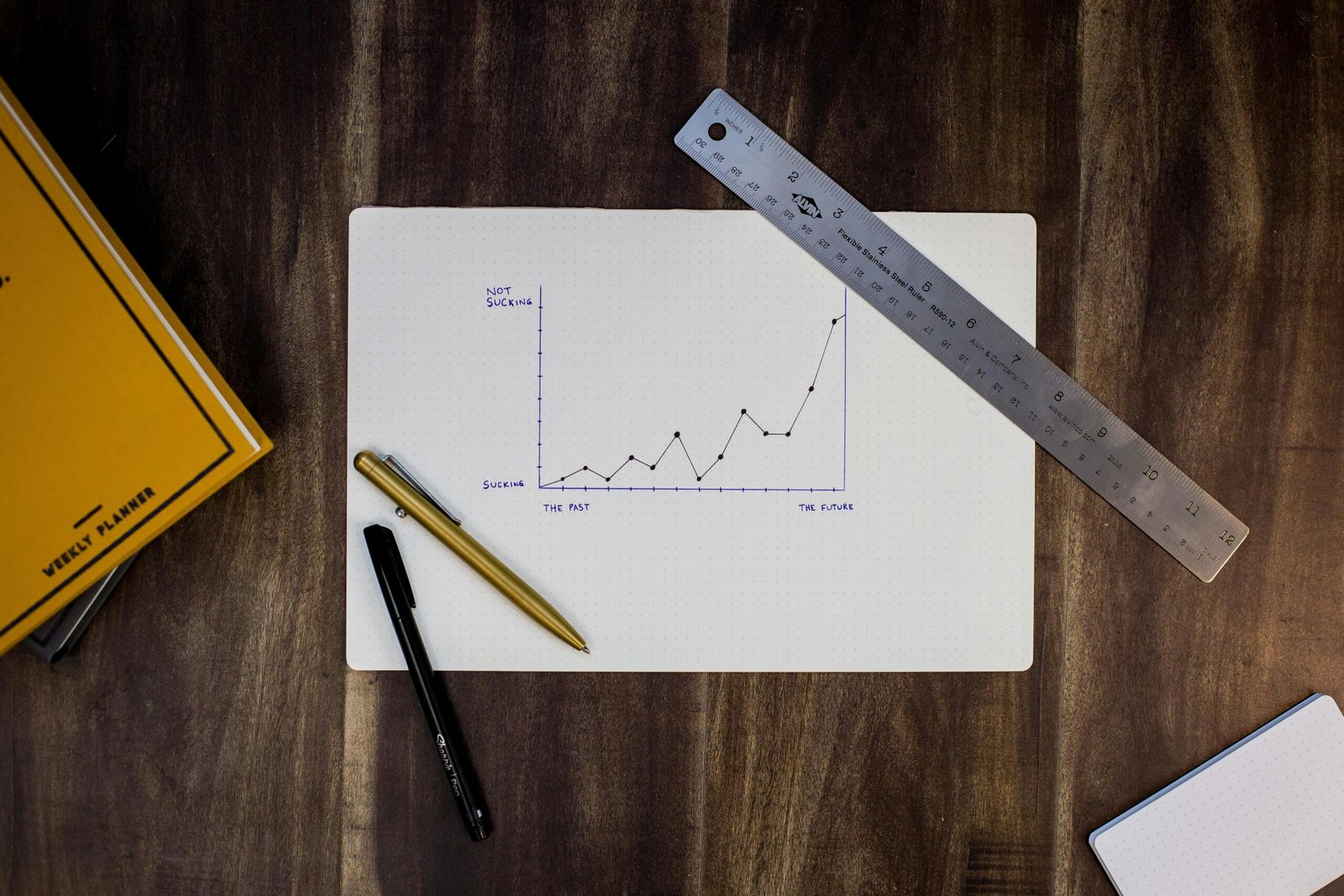Introduction to Budgeting Tools and Apps
In today’s fast-paced world, effective personal finance management is more critical than ever. Budgeting plays a pivotal role in ensuring financial stability and achieving long-term goals. The advent of budgeting tools and apps has revolutionized this process, making it easier for individuals and families to track their income, expenses, and savings.
Traditional budgeting methods, such as spreadsheets and manual ledger entries, often proved time-consuming and prone to errors. In contrast, digital budgeting tools and apps offer a more streamlined and user-friendly approach. These tools provide real-time updates, allowing users to monitor their financial activities instantaneously. With advanced features such as automated tracking and financial goal setting, they significantly enhance the accuracy and efficiency of budgeting.
One of the major benefits of using digital budgeting tools is their ease of use. Most apps are designed with intuitive interfaces that cater to users with varying levels of financial literacy. This inclusivity ensures that even those with minimal budgeting experience can manage their finances effectively. Furthermore, the ability to sync these tools with bank accounts and credit cards provides a comprehensive view of one’s financial status, eliminating the need for manual data entry.
The growing popularity of budgeting tools and apps underscores their effectiveness and versatility. They cater to a wide range of financial needs and preferences, from simple expense tracking to intricate investment management. Whether an individual is looking to save for a major purchase, reduce debt, or simply gain better control over daily spending, there is a budgeting tool designed to meet those specific requirements.
Overall, the transition from traditional budgeting methods to digital tools offers numerous advantages, making personal finance management more accessible and efficient. As technology continues to evolve, these tools are likely to become even more sophisticated, further simplifying the budgeting process for users worldwide.
Top Budgeting Tools for Personal Finance
Managing personal finances can be a daunting task, but with the right budgeting tools, it becomes significantly easier. Here, we explore some of the top budgeting tools available, catering to a variety of financial needs and preferences. This mix of free and paid options includes Mint, YNAB (You Need A Budget), PocketGuard, and Goodbudget, each offering unique features to help users take control of their finances.
Mint is one of the most popular free budgeting tools available. It offers an intuitive platform that connects to your bank accounts, credit cards, and investment accounts, allowing for real-time tracking of your spending and income. Mint’s key features include budget creation, bill tracking, and credit score monitoring. Users can categorize transactions, set spending limits, and receive alerts when they approach or exceed their budget. The tool’s comprehensive financial overview makes it easier to identify savings opportunities and stay on top of your financial health.
YNAB (You Need A Budget) is a paid budgeting tool that follows a unique approach to financial management. YNAB focuses on giving every dollar a job, helping users allocate their money towards specific goals and expenses. This proactive budgeting method encourages users to live within their means and prioritize saving. Key features include goal tracking, debt management, and detailed financial reports. YNAB’s user-friendly interface and educational resources make it an excellent choice for those looking to gain a deeper understanding of their financial habits and make informed decisions.
PocketGuard simplifies budgeting by providing a clear snapshot of your available funds after accounting for bills and savings goals. This free tool connects to your financial accounts and categorizes your spending automatically. PocketGuard’s standout feature is the “In My Pocket” functionality, which shows how much disposable income you have left after covering essential expenses. The app also offers personalized tips to help users reduce spending and save more effectively, making it ideal for those looking for a straightforward and stress-free budgeting experience.
Goodbudget is a digital envelope budgeting system that helps users allocate their income towards different spending categories. This method promotes disciplined spending and saving by ensuring that money is set aside for specific purposes. Goodbudget offers both free and paid plans, with features such as transaction tracking, budget sharing, and detailed financial reports. The tool’s simplicity and collaborative capabilities make it a great option for individuals and families looking to manage their finances together.
In conclusion, whether you prefer a free tool like Mint or a more structured approach with YNAB, there are numerous budgeting tools available to help you manage your personal finances. By leveraging these tools, you can gain better control over your spending, identify savings opportunities, and work towards achieving your financial goals.
Best Budgeting Apps for On-the-Go Financial Management
With the growing reliance on smartphones and tablets, managing personal finances has become more accessible and convenient. Mobile budgeting apps have revolutionized the way users track expenses, set budgets, and make informed financial decisions on the go. Among the plethora of options available, a few stand out for their user-friendly interfaces and robust features.
EveryDollar, developed by financial expert Dave Ramsey, is renowned for its simplicity and effectiveness. The app employs a zero-based budgeting method, ensuring every dollar is accounted for. Users can easily create customized budgets, track spending, and visualize their financial progress. EveryDollar also integrates seamlessly with bank accounts, allowing for automatic transaction tracking, which saves time and minimizes errors. The app’s intuitive design makes it a favorite among users who prefer straightforward financial management without unnecessary complexities.
Wally is another powerful tool in the mobile budgeting landscape. It offers a comprehensive suite of features, including expense tracking, budget creation, and financial goal setting. Wally’s standout feature is its capability to support multiple currencies, making it ideal for users who travel frequently or manage international finances. Additionally, Wally can scan receipts and categorize expenses automatically, reducing the manual input required. The app’s user interface is sleek and modern, providing an enjoyable user experience that encourages regular use and engagement.
Clarity Money distinguishes itself with its emphasis on financial insights and personalized recommendations. By connecting to various financial accounts, Clarity Money provides users with a holistic view of their finances. The app analyzes spending patterns, identifies potential savings, and even suggests ways to lower bills or cancel unwanted subscriptions. Its visually appealing dashboard and detailed reports empower users to make informed financial decisions swiftly and confidently.
In today’s fast-paced world, having a reliable budgeting app on your mobile device is crucial for maintaining financial health. Whether it’s the straightforward approach of EveryDollar, the comprehensive features of Wally, or the insightful analysis provided by Clarity Money, these apps offer invaluable tools for effective financial management on the go. The convenience and accessibility they provide ensure that users can stay on top of their finances anytime, anywhere.
Tips for Choosing the Right Budgeting Tool or App
Selecting the right budgeting tool or app is crucial for effective financial management. To make an informed choice, consider the following factors:
Ease of Use
An intuitive interface can make or break your budgeting experience. Opt for a tool that is user-friendly, allowing you to easily track income, expenses, and savings. A cluttered or overly complex platform might deter consistent usage, hampering your financial goals.
Cost
When considering cost, weigh the features offered against your budget. Many tools offer free versions with basic functionalities, while paid versions provide advanced features like investment tracking or financial advice. Decide what features are essential and if the cost aligns with your financial plan.
Device Compatibility
Ensure the budgeting app is compatible with your devices. Look for cross-platform availability, such as iOS, Android, and web versions, to provide seamless access across all your gadgets. This flexibility ensures you can update and review your finances anytime, anywhere.
Financial Goals
Your financial goals should guide your choice. Whether you aim to save for a major purchase, pay off debt, or invest, select a tool that aligns with these objectives. Some apps are tailored for specific goals, offering specialized features such as debt payoff planners or investment tracking.
Checklist for Evaluation
Use the following checklist to evaluate your options:
- Is the interface user-friendly?
- Does the cost fit within your budget?
- Is it compatible with all your devices?
- Does it support your specific financial goals?
- Are there positive reviews from other users?
- Is a free trial available?
- Does it offer robust privacy and security features?
Reviews and Free Trials
Reading reviews can provide insights into user satisfaction and common issues. Additionally, take advantage of free trials to test the tool’s functionality and see if it meets your needs before committing.
Privacy and Security
Financial data is sensitive, making security a top priority. Choose apps with strong encryption, two-factor authentication, and clear privacy policies to safeguard your information.
Ultimately, the best budgeting tool or app is one that integrates seamlessly into your lifestyle and helps you achieve your financial goals effectively. Taking the time to assess these factors will ensure you make a choice that supports your financial well-being.






